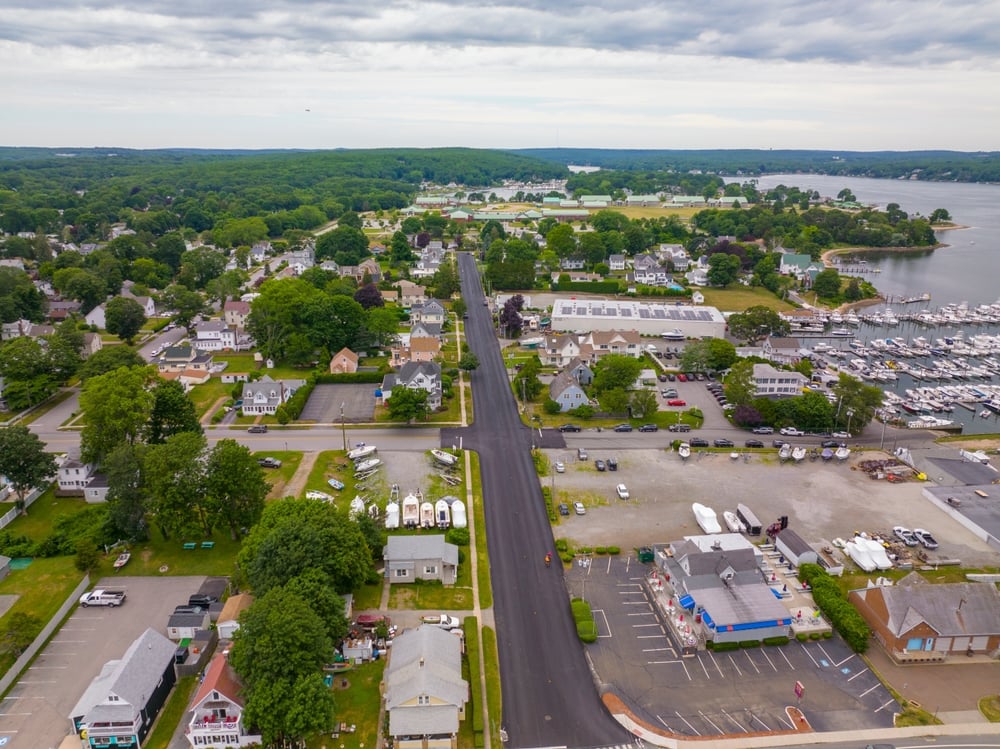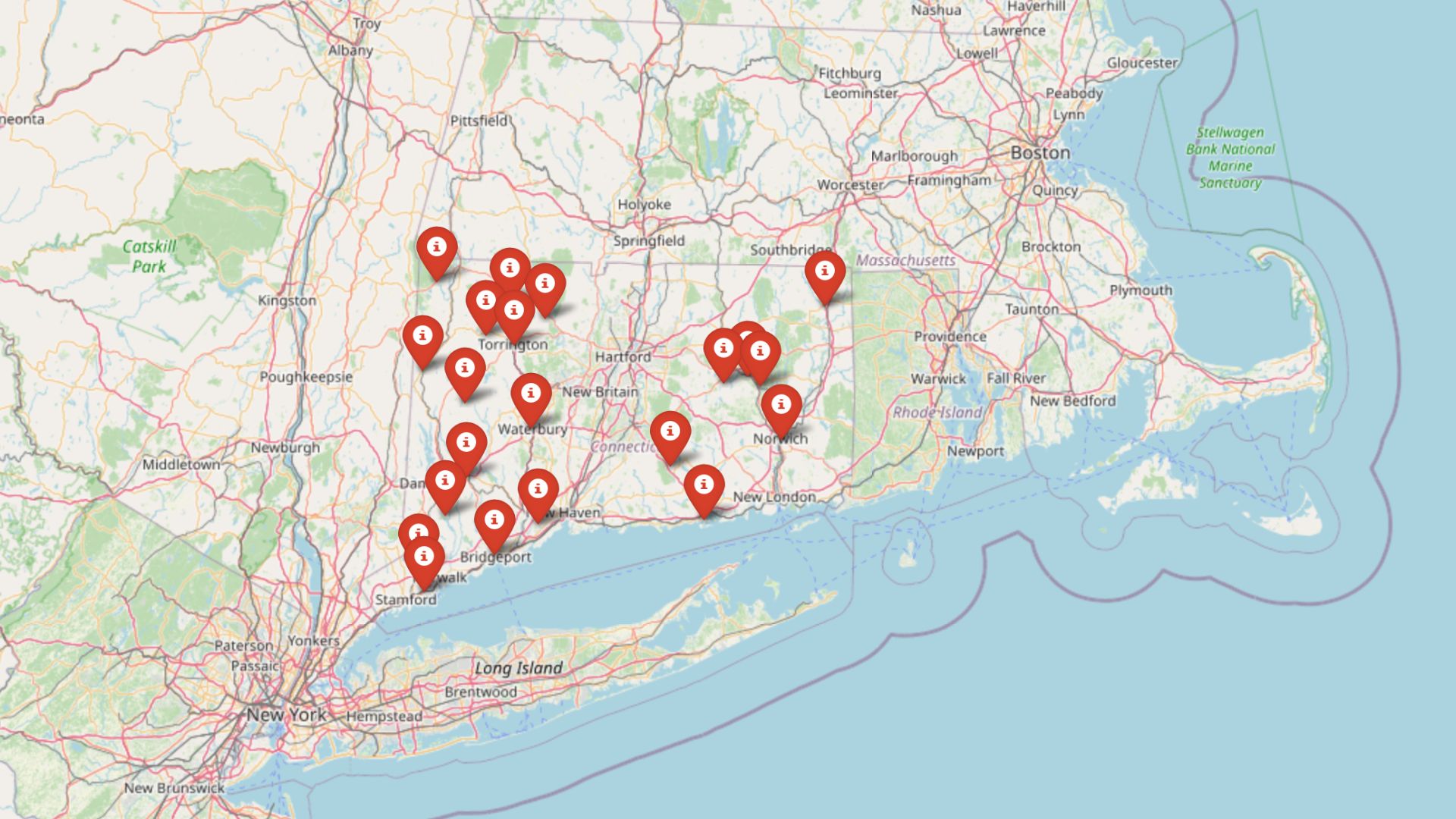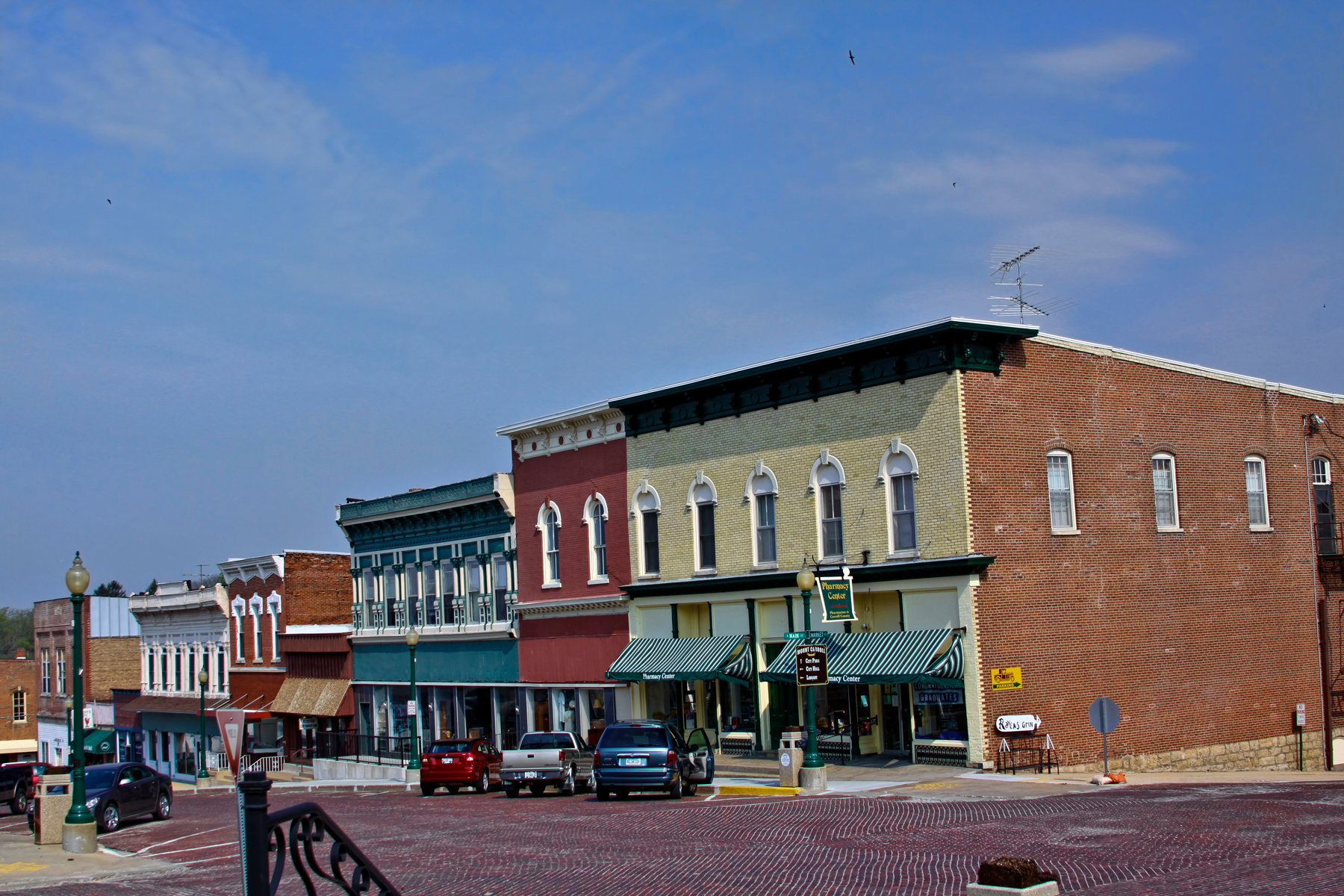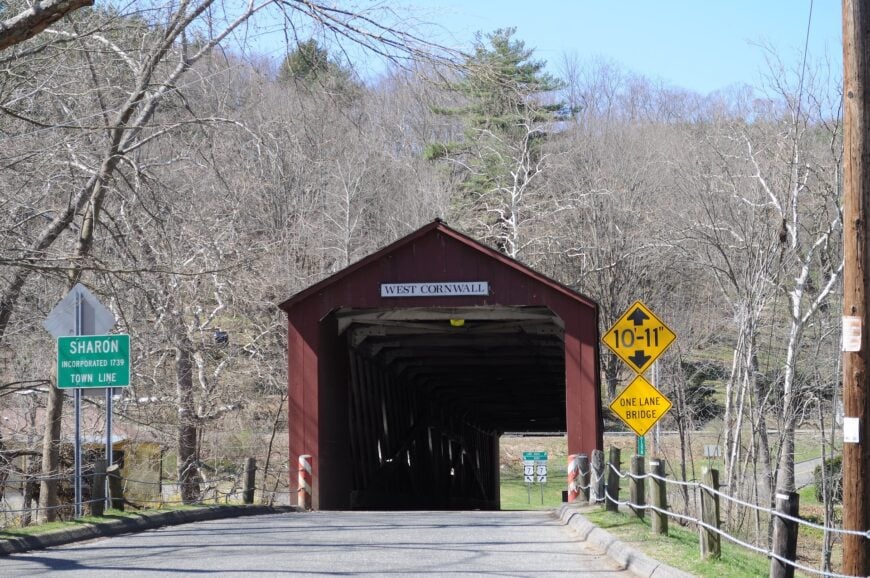
Northwest Connecticut is sprinkled with hidden gems—towns where time seems to slow down and nature takes center stage.
From serene lakesides to rolling hills, these places provide the perfect escape from the hustle and bustle of city life. Join us as we countdown the 25 most secluded towns in this charming corner of the state, each offering its own unique blend of tranquility, beauty, and a touch of New England magic.
Whether you’re seeking a quiet weekend getaway or considering a move to somewhere more peaceful, these towns might just be exactly what you’re looking for. Let’s dive into these enchanting locales where seclusion and charm go hand in hand.
25. Ellsworth: High Meadows and Hidden Light
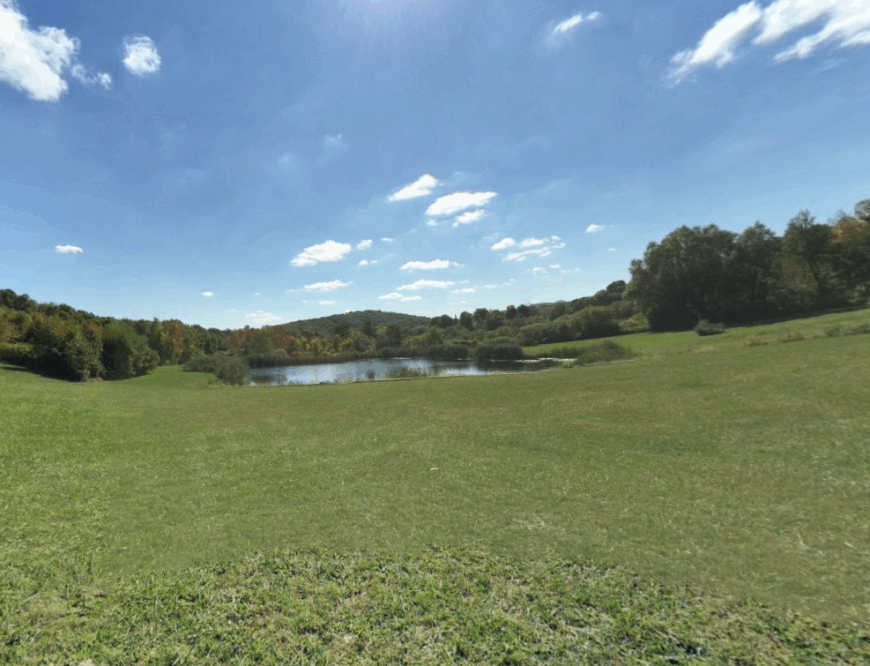
Tucked in the hills above Sharon, Ellsworth floats above the noise. It’s all rolling farmland, wind through old orchards, and fields that blaze gold at sunset. The roads are narrow, unlined, and dappled with shadow, and the barns seem to tilt gently with age and grace.
I remember turning onto an unmarked lane and not seeing another car for miles. Just hawks, fences, and sky. Ellsworth doesn’t shout—it sighs.
And in that sigh, you find your own quiet.
Where is Ellsworth?
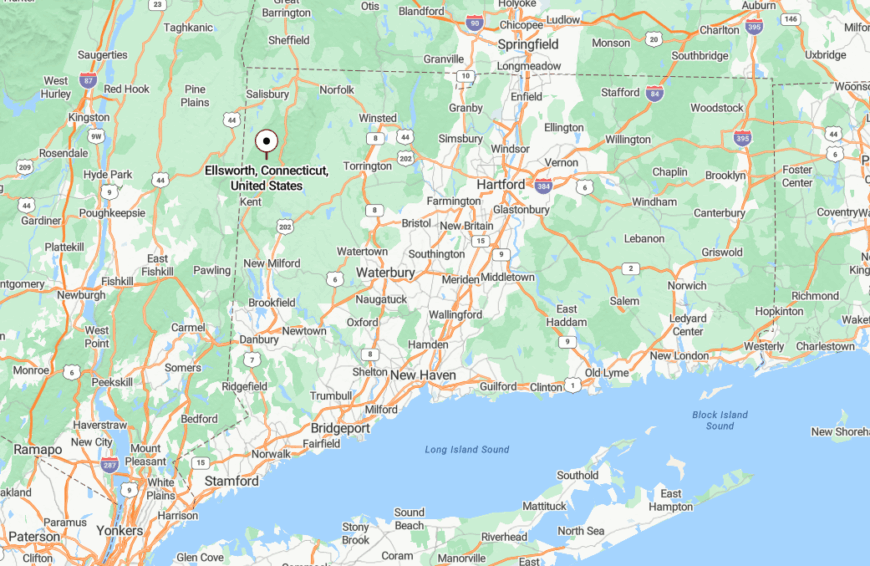
Ellsworth is a rural district in northern Sharon, rising into the hills near the New York line. It’s reached by roads like Westwoods and Fairchild, winding through high pastures and groves of maples.
With no central square and few signs, Ellsworth is more sensed than seen—a scattered community above the bustle, where stars feel closer and roads stretch farther.
24. Riverton: A Riverside Whisper in the Woods
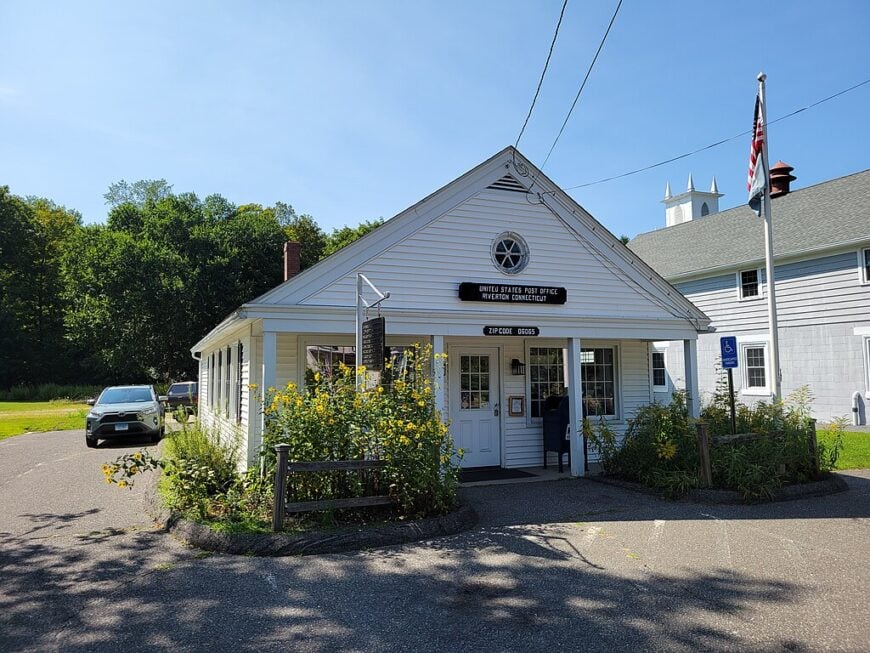
Riverton clings gently to the edge of the Farmington River, where the water winds past thick woods and timeworn porches. It’s a tiny, historic village where the loudest sound is the rustling of leaves or the echo of a fly fisherman’s cast.
I’ve wandered through on quiet autumn mornings when the bridge is empty and the whole town feels like it’s holding its breath. With only a handful of streets, it’s easy to miss—but unforgettable once found.
The absence of noise, haste, or hurry makes Riverton feel like a watercolor painting come to life—soft, muted, and peaceful.
Where is Riverton?
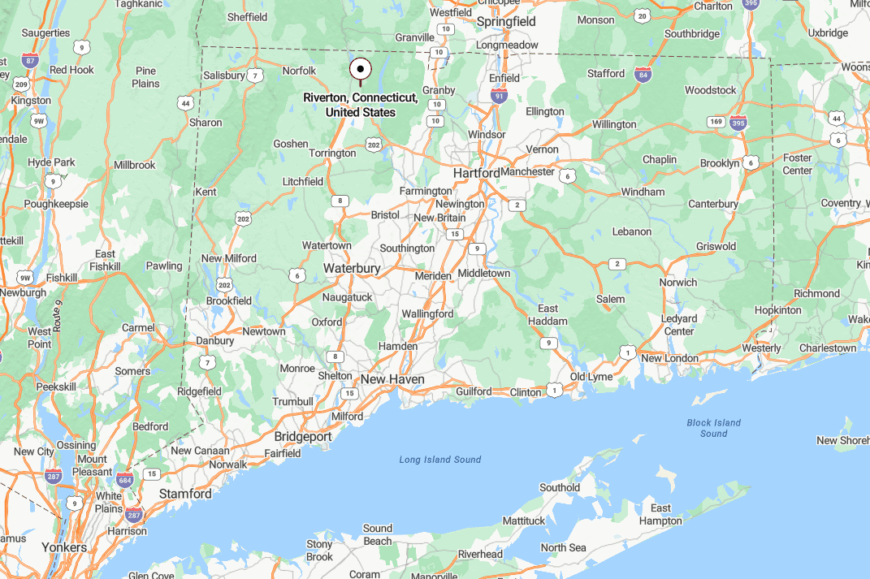
Riverton is a hamlet of Barkhamsted, located in the northwest corner where Litchfield County folds into the hills near Hartland and New Hartford. It lies along Routes 20 and 181, nestled beside the riverbank.
Its seclusion is enhanced by the curves of the land and forested surroundings, and the fact that it’s off the radar for most travelers gives it that secret-garden charm.
23. Bethlehem: Where Bells Ring Soft Over Farmland
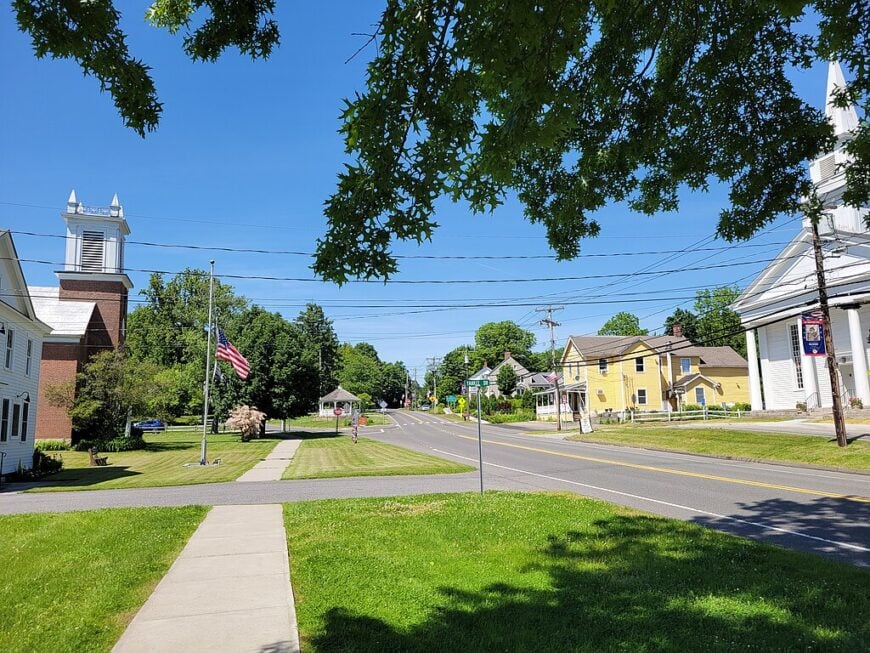
Bethlehem carries a quiet that lingers, the kind found in small town greens and the long pauses between passing cars. It’s a town of wide-open farmland, gravel driveways, and handmade signs tacked to fence posts.
In December, the post office hums with its holiday name, but the rest of the year, Bethlehem belongs to the wind, the fields, and the slow rhythm of rural life. I’ve stood at the edge of a pasture here and heard nothing but the breeze in the trees.
This is a town where time moves differently—where quiet isn’t an absence, but a presence.
Where is Bethlehem?
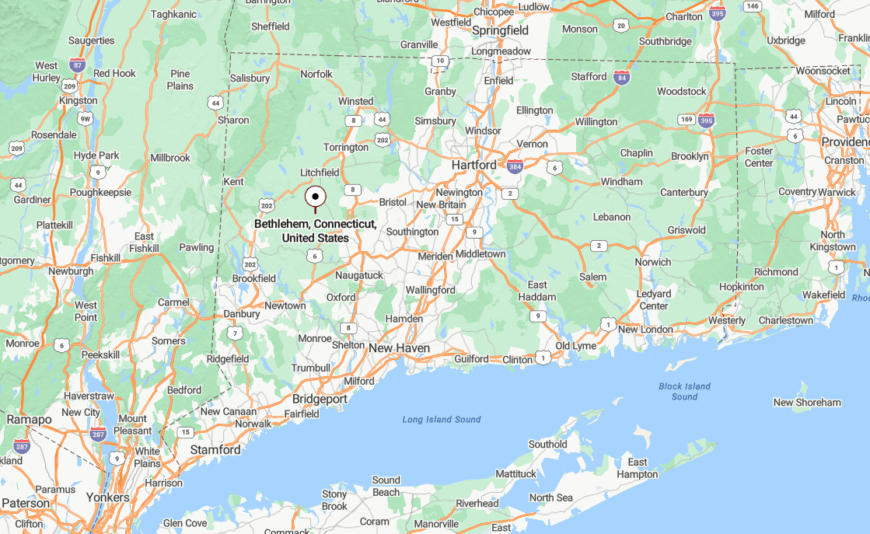
Bethlehem is located in southern Litchfield County, just south of Morris and west of Woodbury. You’ll find it along Route 61, cradled between forested ridges and pastoral farmland.
Its distance from highways and low population density give it a rare, reflective stillness—a rural calm that feels preserved and deeply rooted.
22. Harwinton: A Quiet Fold in the Foothills
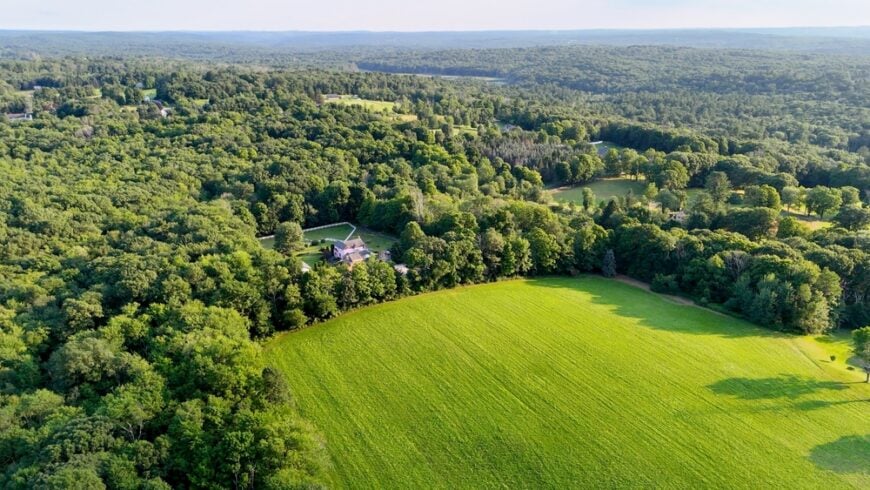
Harwinton unfolds gently across the hills, its roads narrow and unhurried, its fields long and still. Here, white farmhouses perch above stone walls, and church steeples rise quietly against wide New England skies.
The town carries a softness, even in winter—like a wool blanket pulled snug over the hills. I’ve wandered its lanes in early spring, when the snow just melts, and found myself lost in the calm between breaths.
It’s not remote in miles, but in spirit—Harwinton hums at a different frequency than the world around it.
Where is Harwinton?
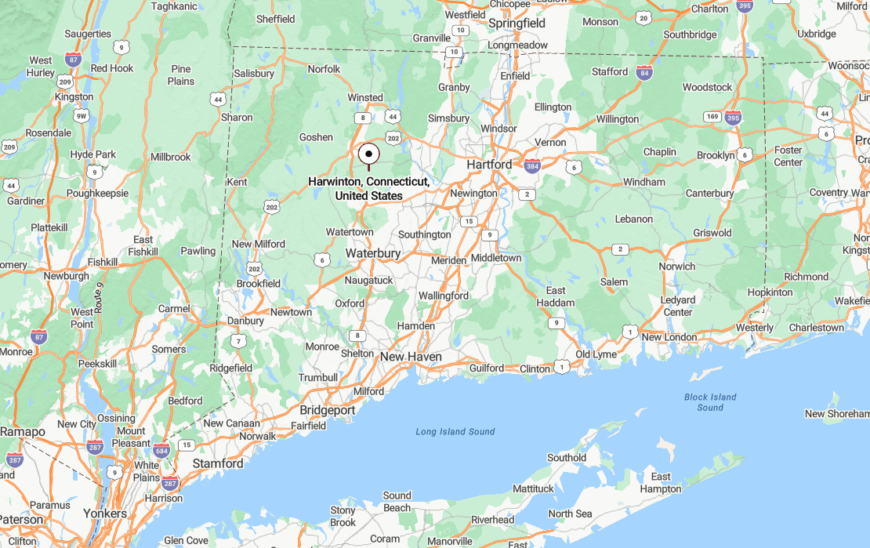
Harwinton sits along the eastern edge of Litchfield County, nestled between Torrington and Burlington. It’s reachable by Routes 4 and 118, but most of its heart lies beyond those roads.
With its spread-out homesteads and preserved woodlands, Harwinton feels like a town resting just out of reach—serene, tucked in, and always a little quieter than you remember.
21. New Preston Hill: A Ridge of Peace Above It All
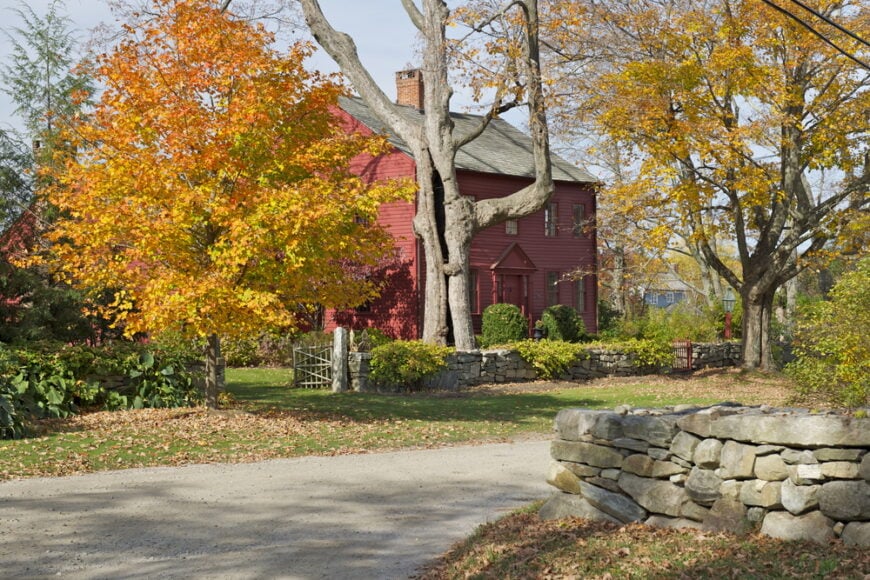
New Preston Hill sits above the bustle, quiet and contemplative, with sweeping views that stretch across wooded valleys and quiet lakes. Its beauty is subtle, with centuries-old homes peeking out from groves of trees.
There’s no main street, no hum of traffic—just soft roads and the occasional sound of birds calling from a distant fencepost. I love how the wind carries through the open space here, brushing the tall grasses like a lullaby.
It feels like a place set apart—not by distance, but by elevation and spirit.
Where is New Preston Hill?
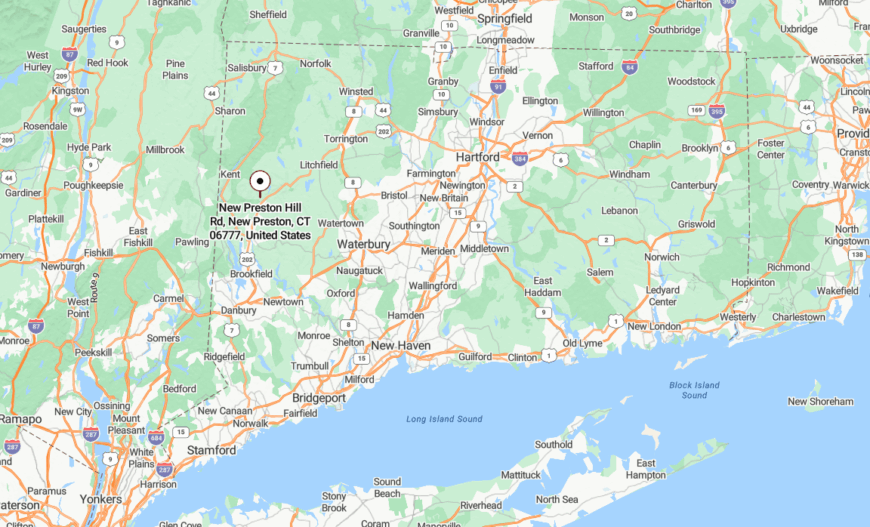
New Preston Hill lies just north of New Preston village, in the higher elevations of Washington. Accessed by New Preston Hill Road and dotted with stone walls and farm fields, it overlooks Lake Waramaug from a quieter perch.
Its elevated location and spread-out homes lend it an almost meditative silence, far from the tourist buzz near the water below.
20. Lakeville: A Lakeside Hamlet in No Rush
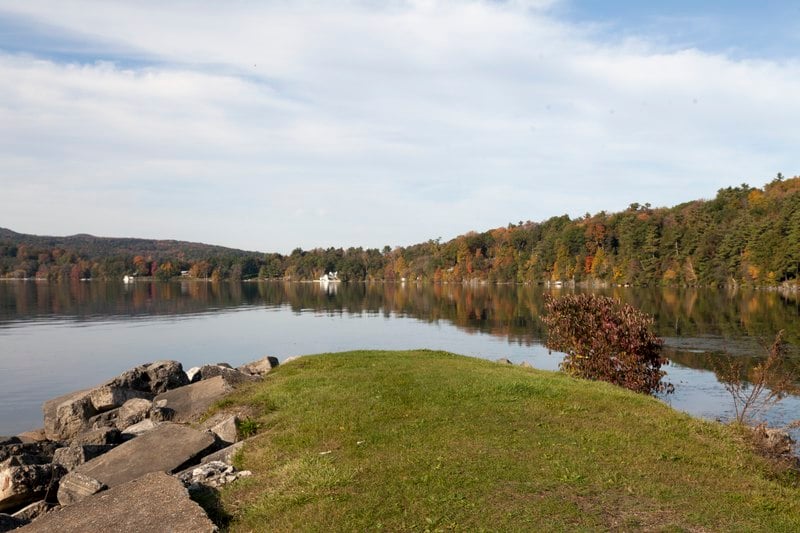
Lakeville curls softly around Lake Wononscopomuc, where sailboats drift slowly and the sky turns gold at dusk. It’s not a big place, but it has a big stillness—a kind of openness that settles in your bones.
The rhythm here is gentle: a morning paddle, a walk to the library, a quiet bench by the water’s edge. Even in summer, when other places buzz, Lakeville remains unhurried.
It’s a place to rest, to reflect, and to listen to what quiet actually sounds like.
Where is Lakeville?
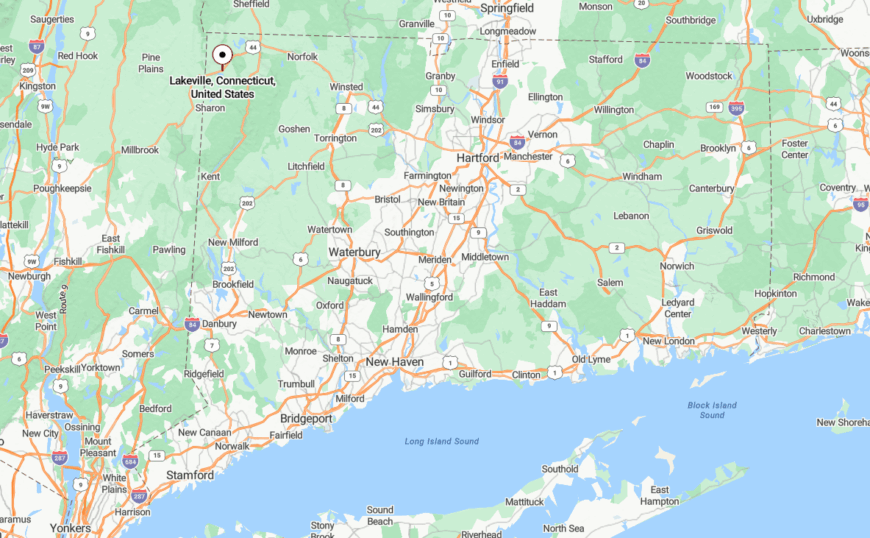
Lakeville is a village within the town of Salisbury, located near the New York border in Connecticut’s northwest corner. It’s just south of Salisbury center along Route 41.
Surrounded by wooded hills and tranquil lakes, Lakeville’s tucked-in geography and absence of sprawl make it one of the region’s most peaceful nooks.
19. Morris: Rolling Meadows and Timeless Quiet
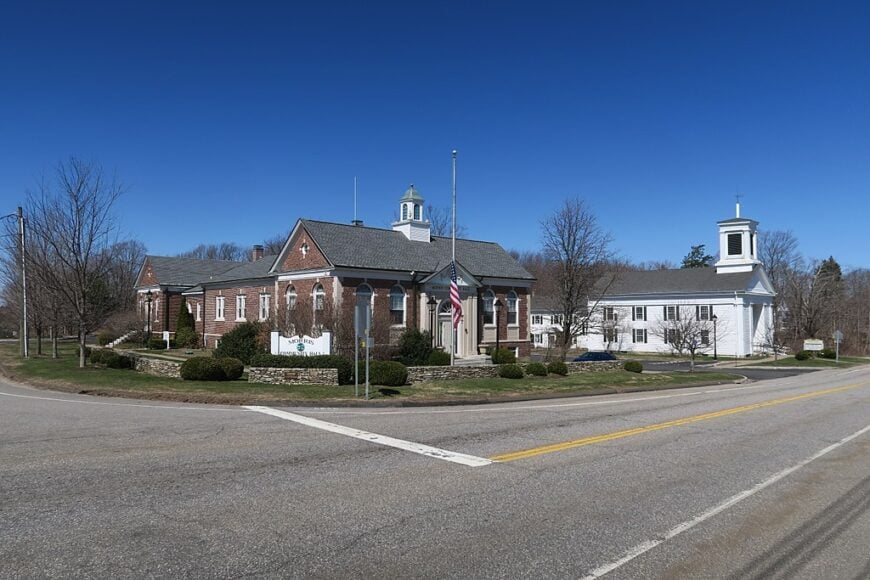
Morris is a town of gentle hills and broad fields, where the pace of life is measured more by the changing light than by the ticking clock. It stretches wide and calm, dotted with weathered barns, slow roads, and skies that seem to go on forever.
The charm here isn’t in storefronts or village bustle—it’s in the hush of farm lanes, the golden light over Wigwam Reservoir, and the way the wind moves through the grasses like a whispered story. I’ve driven those backroads at dusk and felt like I’d wandered into a painting that didn’t want to be found.
Morris doesn’t make noise. It simply welcomes you—quietly, completely—into its wide, open stillness.
Where is Morris?
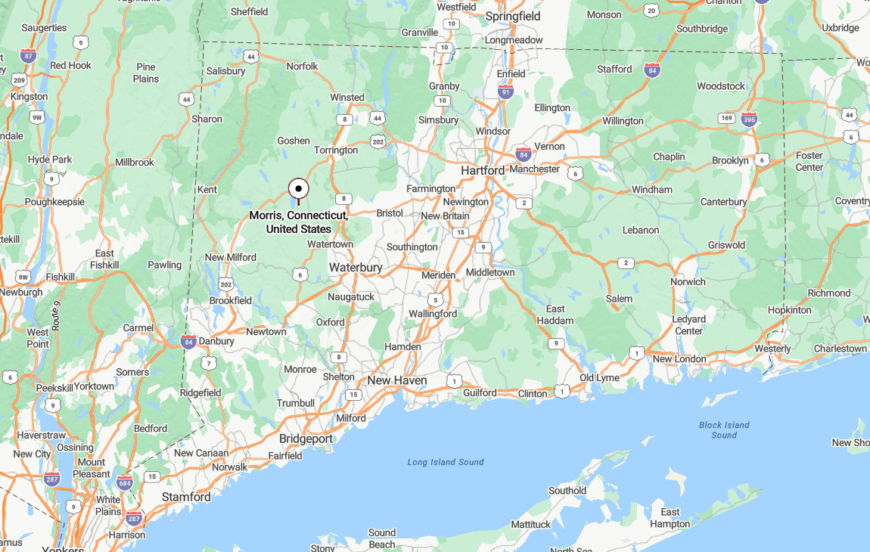
Morris lies in the southern part of Litchfield County, bordered by Litchfield to the north and Bantam Lake to the west. It’s accessed by Route 109 and a network of narrow country roads that wind through woods and pastures.
Its central location in the hills is deceptively secluded—surrounded by forest preserves and free of urban sprawl, Morris feels like the countryside distilled into its purest form.
18. Taconic: Meadows in the Mist
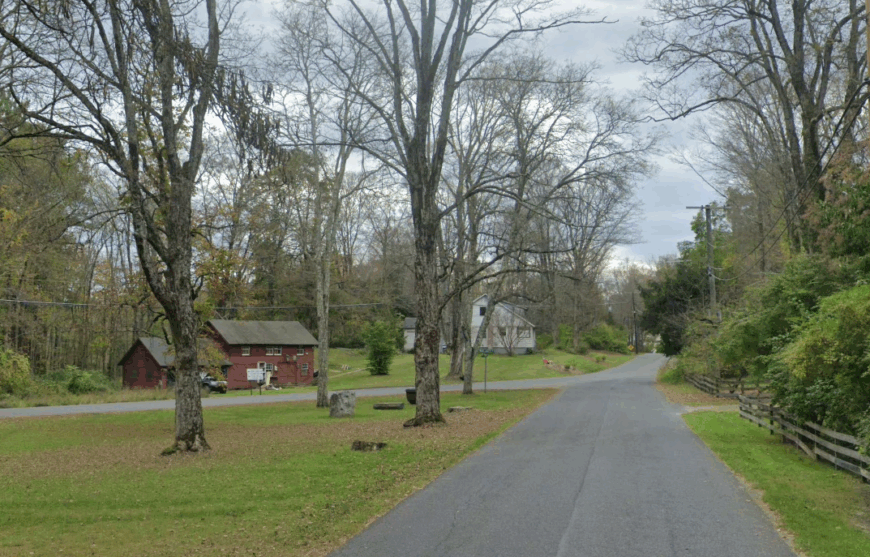
Taconic doesn’t say much. It whispers through grassy meadows and soft fog that settles on early mornings. Time flows differently here—like molasses in winter.
Homes are spread out, marked by long driveways and low stone fences, with little to remind you of the present. I once spent an hour here and saw more hawks than people.
It’s not a town you visit for excitement—it’s a place to breathe deeper, think slower, and disappear for a while.
Where is Taconic?
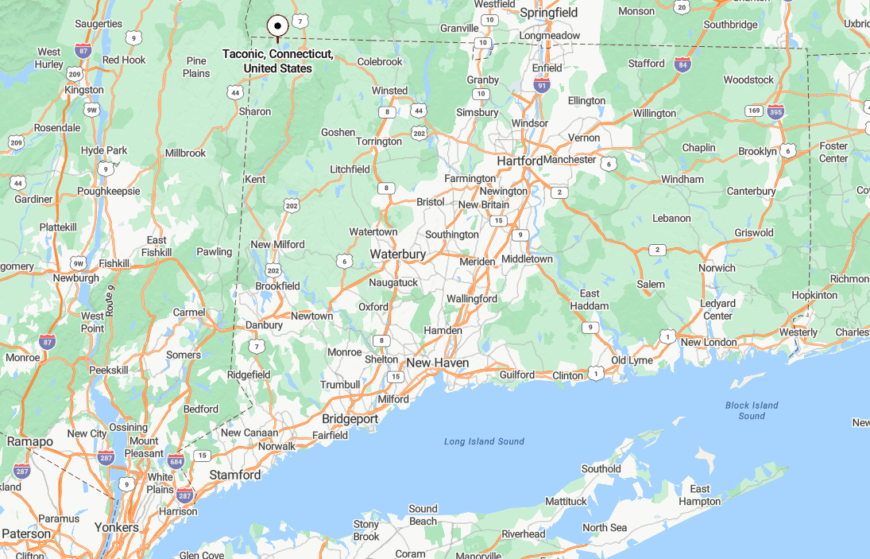
Taconic is part of Salisbury, located northwest of Lakeville near the Massachusetts line. It’s reached by way of Taconic Road and surrounded by conservation land and quiet ridgelines.
Its borderland setting and natural buffers make it feel like a forgotten edge—where Connecticut ends and stillness begins.
17. Lime Rock: Still Echoes by the River
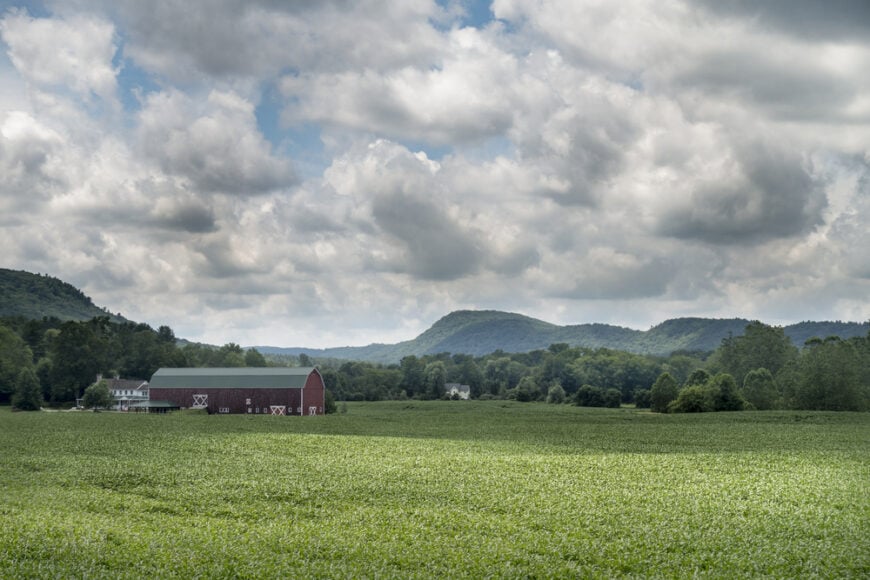
Lime Rock lives in the shadow of history, where echoes of old racetracks and ironworks now give way to birdsong and the sound of the Housatonic flowing past. It’s a place where stories live in the stones.
There’s beauty in its worn barns, its winding paths, its quiet bend of river. Though close to more lively corners of Salisbury, it never seems to stir.
It’s as though the hills decided to cradle Lime Rock in silence, and the town has graciously obliged.
Where is Lime Rock?
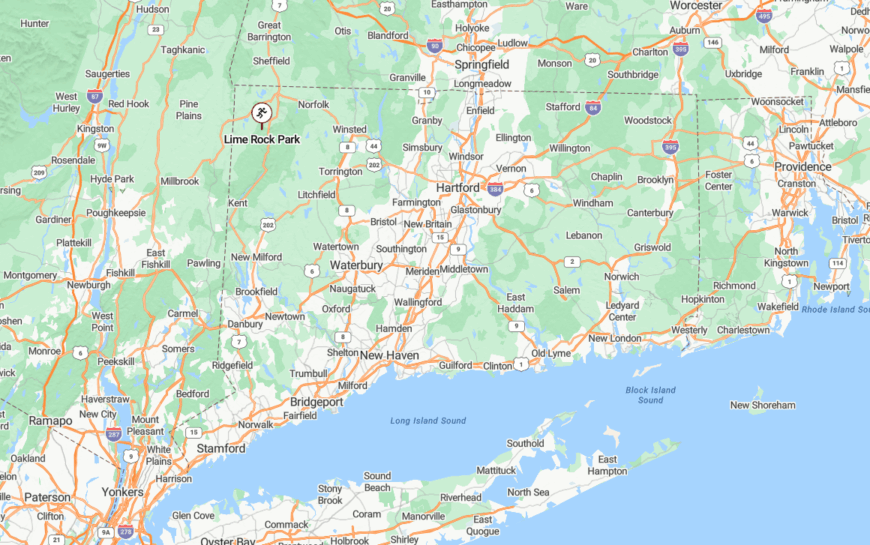
Lime Rock sits along the Housatonic River in western Salisbury, reached by River Road and Dugway Road. It’s nestled just west of Falls Village and north of Sharon.
The hills rise gently around it, and the river’s slow current defines the edges of this hushed little pocket of land.
16. Mount Riga: Where Connecticut Touches the Sky
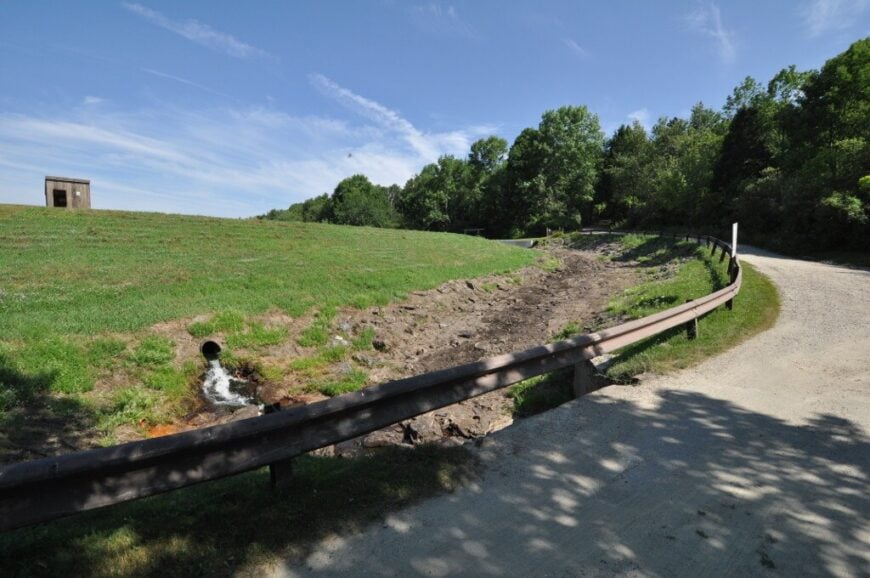
Mount Riga isn’t a town in the traditional sense—it’s a collection of cabins and camps perched high in the northwest hills of Salisbury. But what it lacks in size, it more than makes up for in solitude.
This is a place of crisp mountain air, private lakes, and long gravel paths that lead nowhere in particular. I once stayed in a cabin where you could hear coyotes at night and see every star in the sky.
Up here, it’s not just quiet—it’s elemental.
Where is Mount Riga?
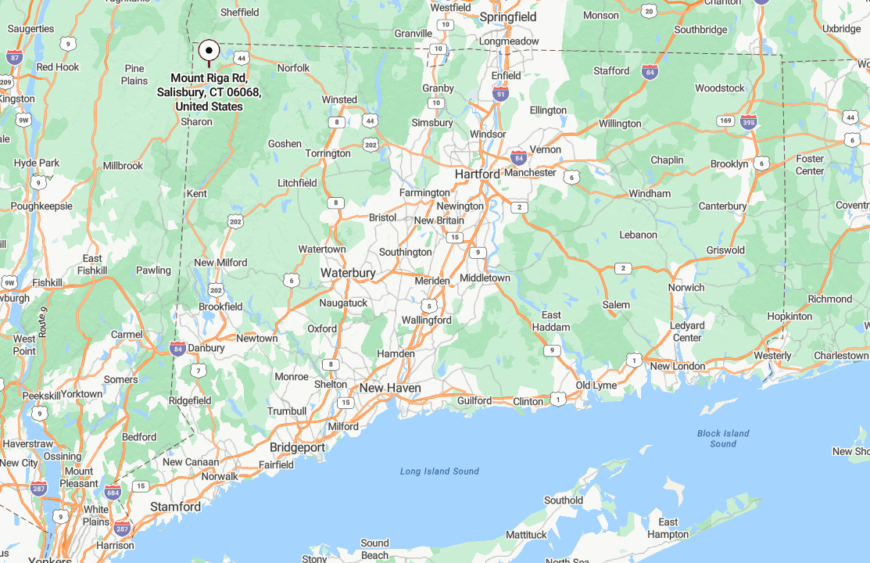
Mount Riga lies at the far northwest tip of Connecticut, near the tri-state border with New York and Massachusetts. It’s reached by dirt roads northwest of Salisbury center, beyond Mount Washington Road.
Its elevation, remoteness, and lack of infrastructure preserve its wild and utterly secluded nature.
15. Northfield: The Quiet Edge of Litchfield
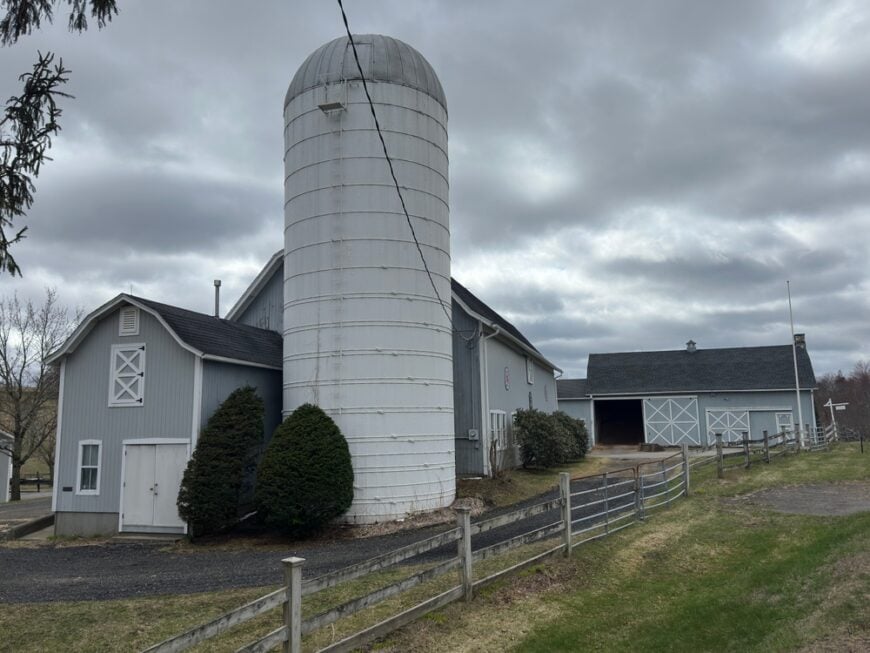
Northfield sits softly at the southeastern tip of Litchfield, a place where the roads curve under heavy canopies and the air smells like woodsmoke in fall.
There’s a millpond, an old library, and not much else—but that’s its beauty. The stillness here feels earned, not imposed. It’s a town for early risers, slow walkers, and those who appreciate silence as a language.
It’s not the kind of quiet you stumble into—it’s the kind you choose.
Where is Northfield?
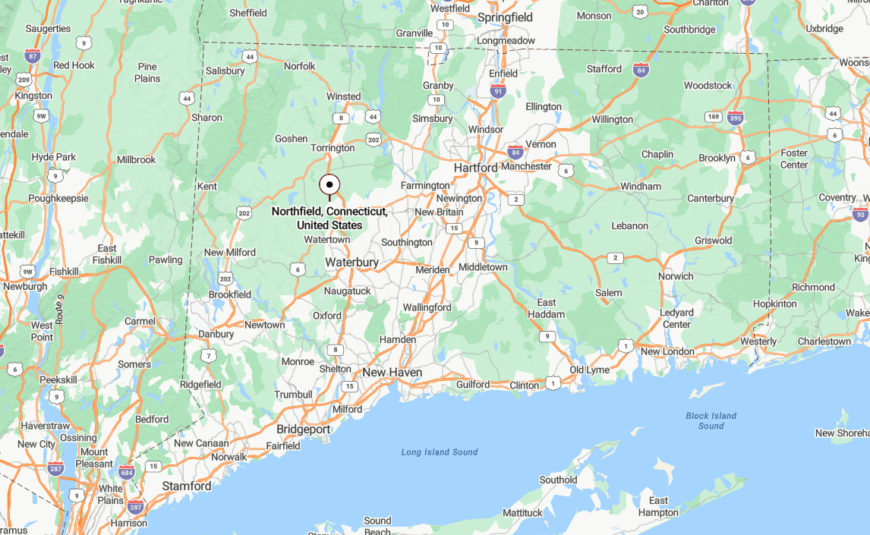
Northfield is a village within the town of Litchfield, accessible via Route 254. It sits southeast of Bantam and west of Thomaston.
Its backroad placement and lack of commercial development give it a hushed, timeless feel that makes the world slow down.
14. Twin Lakes: Reflections and Reverie
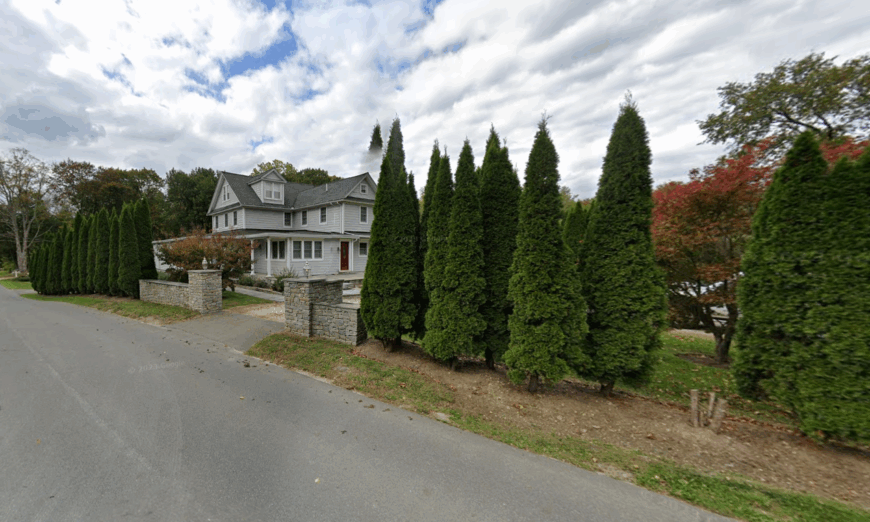
Twin Lakes is a hush of water and pine, where the breeze barely ripples the lake’s mirrored surface. Two lakes sit side by side—Washinee and Washining—holding the sky in their still embrace.
Cabins dot the shore, spaced far apart, each one facing the silence. Even on summer afternoons, it feels like a private world.
This is a place to drift, to dream, and to watch the light change on water.
Where is Twin Lakes?
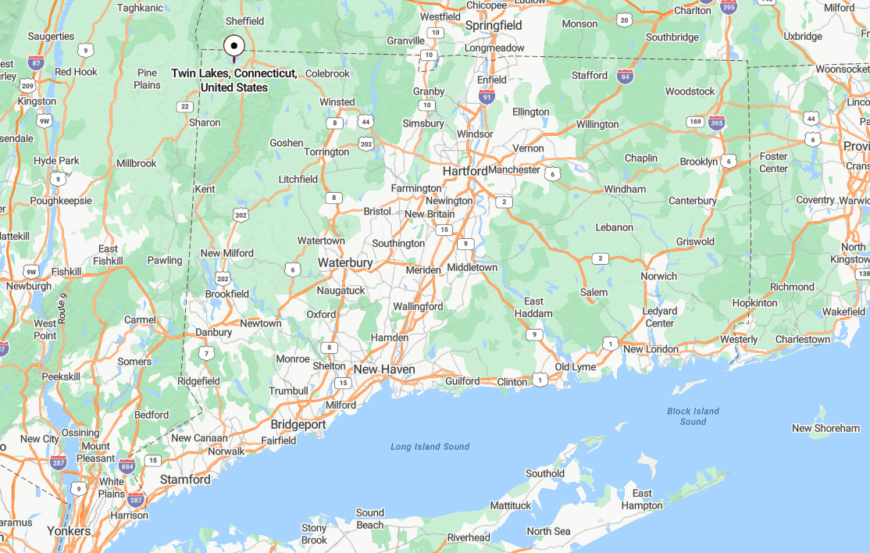
Twin Lakes is part of Salisbury, tucked in the northwest corner of the state near the New York line. It’s reached by Twin Lakes Road, which winds around the water’s edge.
Its lakeside seclusion and limited development protect its quiet beauty, keeping it one of Connecticut’s most peaceful retreats.
13. Falls Village: A Hidden Cascade of Charm
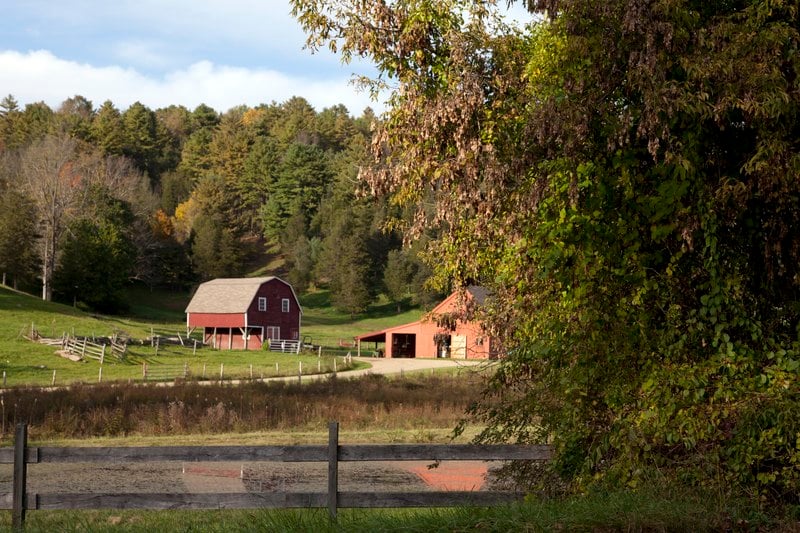
Falls Village is a gentle cluster of history and hush, where white church steeples rise above tree-lined streets and old mill buildings rest beside the river. The falls still rush nearby, but the town itself feels still.
Even the architecture leans into the quiet—colonial homes, soft porches, tidy gardens. I’ve sat by the water and not seen a single soul, just heard the soft roar echoing through the gorge.
It’s not a place for spectacle—just space, beauty, and breath.
Where is Falls Village?
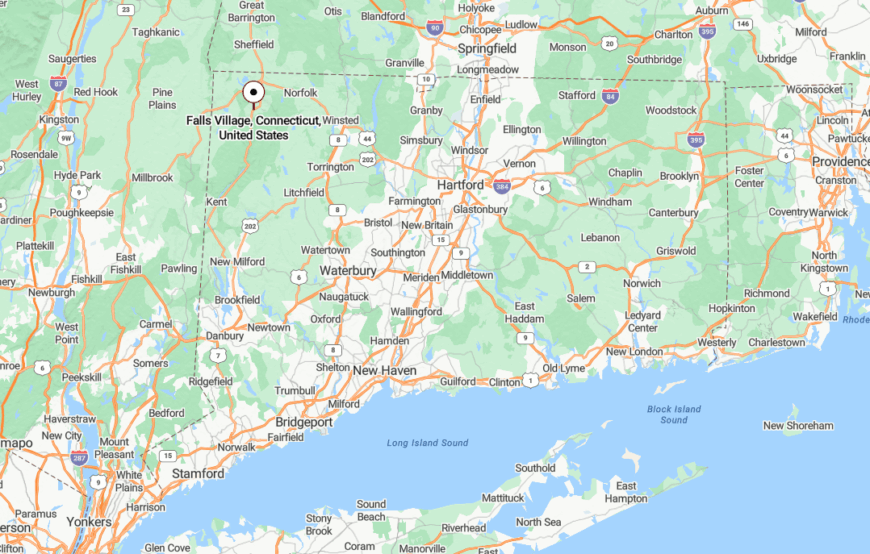
Falls Village is a hamlet of Canaan, nestled in the northwestern corner of Connecticut near the Housatonic River. It sits along Route 126, shielded by hills and forest preserves.
Its lightly traveled roads and tucked-in geography make it a peaceful outpost with the sound of waterfalls always nearby.
12. Milton: Stonewalls and Slow Shadows
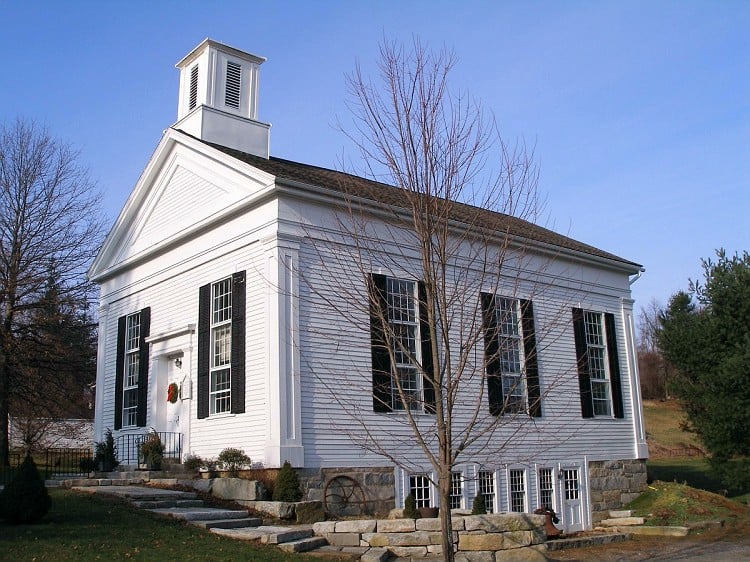
Milton is a village that feels like it fell out of a history book—stone churches, rolling fields, and clapboard houses that look unchanged for a century. It’s the kind of quiet you feel in your chest.
Its roads meander past brooks and ancient oaks, and the hills seem to cradle the town like a secret. You don’t just visit Milton—you drift into it.
At dusk, the long shadows make the whole place feel like a dream.
Where is Milton?
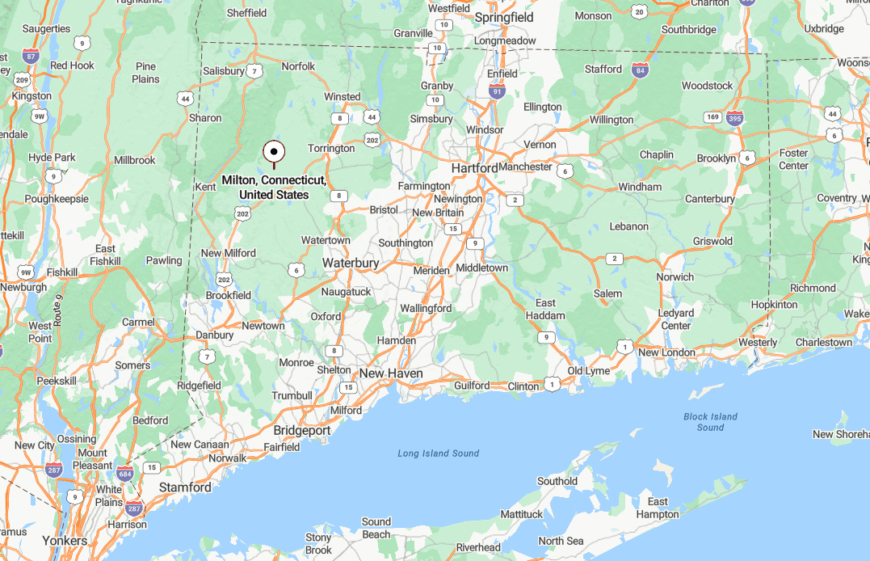
Milton is a historic village in northwest Litchfield, reached via Milton Road and bounded by thick forest and state parks. It lies northwest of Litchfield center.
Its distance from commercial corridors and its deep rural character make it one of the area’s best-kept secrets.
11. Pleasant Valley: A Fold of River and Forest
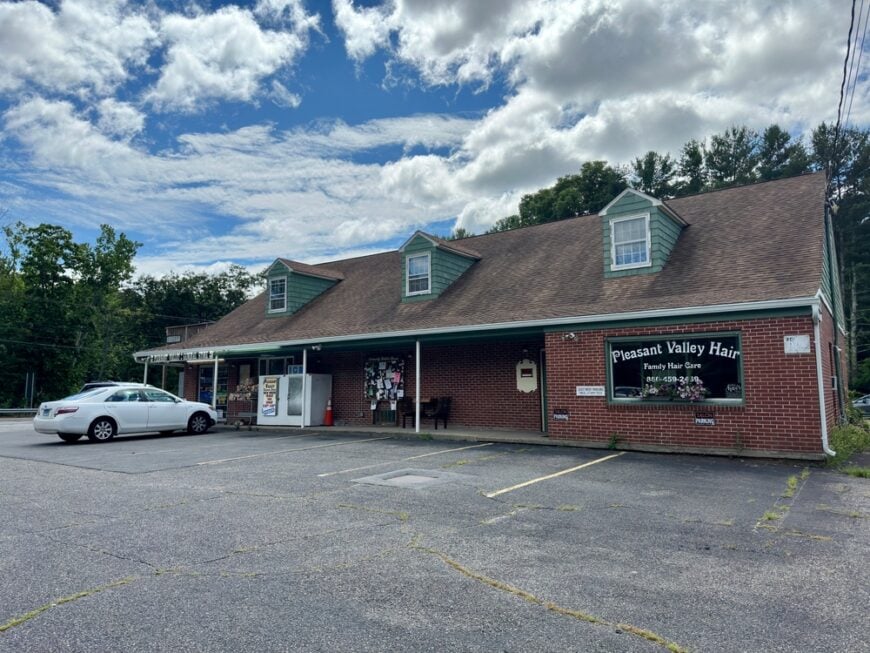
Pleasant Valley feels more like a memory than a destination—tucked between the trees, where the Farmington River runs quick and the roads slow down. It’s the kind of place where fly fishermen cast in silence and the breeze carries the smell of pine and water.
There’s no real downtown, just a scattering of homes and one sleepy country store, wrapped in stillness. I once pulled over at dawn just to listen to the birdsong echo off the riverbanks.
Pleasant Valley doesn’t ask for attention—it offers a quiet welcome, like a friend who understands your need to disappear for a while.
Where is Pleasant Valley?
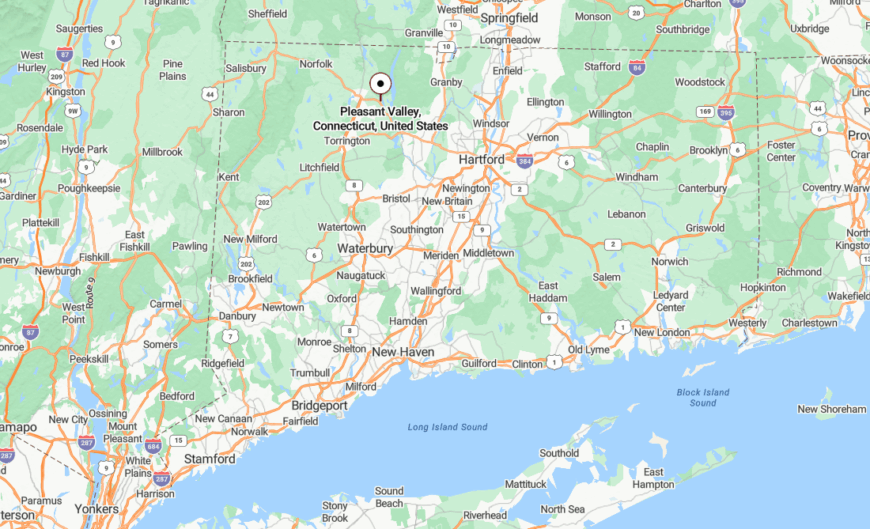
Pleasant Valley is part of Barkhamsted, near the Saville Dam and the upper reaches of the Farmington River. It’s best accessed via Route 181, threading past the reservoir and into the woods.
Its mix of river curves and forested hills keeps it tucked out of sight and out of mind—a truly secluded riverside gem.
10. Barkhamsted: Where Nature Meets Solitude
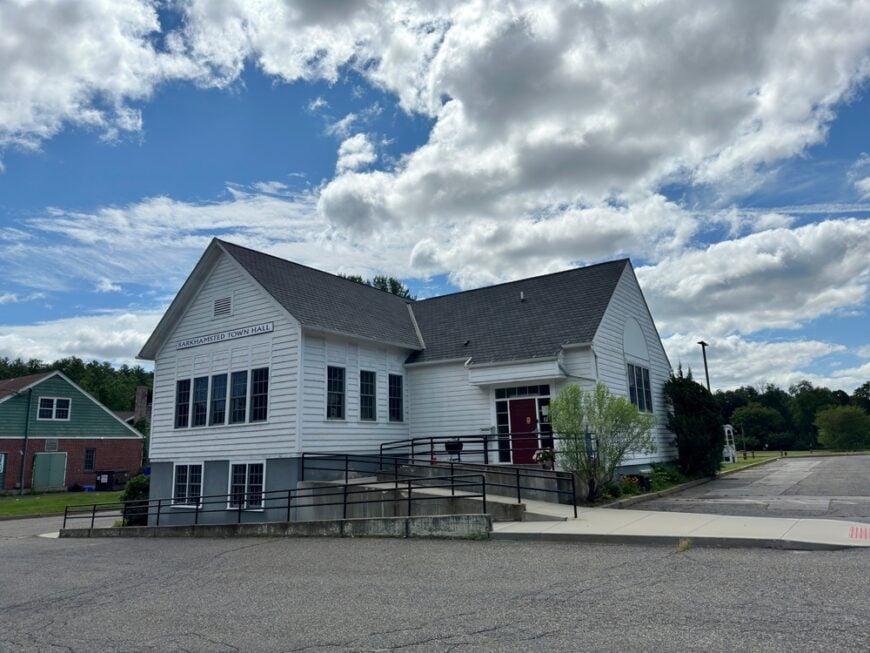
Barkhamsted, with a population of just over 3,700, is a haven for nature lovers like me. Nestled amidst vast forests and home to the beautiful Barkhamsted Reservoir, it’s the perfect spot for hiking, fishing, and simply soaking in the serene surroundings.
There’s not much in the way of bustling industries here; instead, the town thrives on small local businesses, agriculture, and outdoor recreation. What makes Barkhamsted truly secluded is its extensive woodlands and the fact that nearly half of the town is protected land.
I particularly enjoy exploring the People’s State Forest and the historical sites hidden within. The quiet roads and lack of commercial development make it a peaceful retreat away from the noise of larger towns.
Where is Barkhamsted?

Barkhamsted is tucked away in Litchfield County, in the northwest part of Connecticut. It’s bordered by the Farmington River, which adds to its secluded feel, as the winding waterways carve through the dense forests.
The town’s location, away from major highways and urban centers, means it’s enveloped in tranquility. To get there, I usually take Route 44, which meanders through picturesque landscapes, making the journey itself a delightful experience.
The seclusion is enhanced by the sprawling woodlands and reservoirs that surround the town, making it feel like a world apart.
9. Washington: A Tucked-Away Historic Gem

Washington, with a population hovering around 3,500, has always captivated me with its rich history and quaint charm. This small town is brimming with historic buildings, art galleries, and the renowned Gunn Memorial Library and Museum.
Outdoor enthusiasts can enjoy hiking the Steep Rock Preserve or paddling along the Shepaug River. While tourism and local arts are significant here, Washington lacks large industries, which helps maintain its peaceful atmosphere.
What makes it secluded is its location off the main highways and its large estates that are nestled among rolling hills and lush forests. The town’s commitment to preserving its historical character and natural beauty adds to the sense of stepping back in time.
Where is Washington?

Washington is situated in the heart of Litchfield County, tucked away amidst the foothills of the Berkshire Mountains.
Its off-the-beaten-path location means fewer crowds and a stronger sense of community. The town is accessible via winding country roads, and I often find that the journey through the scenic countryside is part of the allure.
Being away from major urban centers and surrounded by natural barriers like hills and rivers, Washington offers the seclusion that makes it an exclusive and tranquil environment. It’s the perfect place for those like me who appreciate both history and solitude.
8. Warren: Nestled Away Near Lake Waramaug

Warren is a small town with a population of about 1,400, making it one of the most peaceful places I’ve visited.
It’s known for its proximity to the stunning Lake Waramaug, where activities like boating, fishing, and lakeside picnics are favorite pastimes. The town doesn’t have much in terms of industry; instead, it’s characterized by small farms, vineyards, and artisanal producers.
Warren’s seclusion comes from its rolling hills, expansive open spaces, and the fact that it’s one of the least densely populated towns in the area. I love wandering through its quiet lanes and discovering hidden spots like the Warren Town Center, which offers a quaint market and cafe.
Where is Warren?

Nestled in Litchfield County, Warren lies to the northwest of Lake Waramaug, adding to its secluded lakeside ambiance. Its location away from major highways keeps it untouched by heavy traffic and urban noise.
To reach Warren, I usually take the scenic Route 341, which winds through picturesque countryside and offers glimpses of the lake. The town’s elevation and surrounding hills further enhance its sense of isolation, creating a peaceful haven that’s perfect for those seeking a retreat from the everyday hustle.
7. Colebrook: Forests, Farms, and Peaceful Living

Colebrook, home to approximately 1,500 residents, is a quintessential New England town that I’ve come to adore for its tranquility. The town is dominated by extensive woodlands and agricultural lands, providing ample opportunities for hiking, bird watching, and simply enjoying the great outdoors.
There are few industries here, which helps maintain its peaceful and unspoiled character; most of the economy revolves around small-scale farming and local businesses.
Colebrook’s remote setting and the fact that it’s crisscrossed by rural roads with little through-traffic contribute to its secluded feel. I especially enjoy visiting the Camp Jewell YMCA, a hidden gem offering various outdoor activities.
Where is Colebrook?

Located in the northwest corner of Connecticut, Colebrook is bordered by Massachusetts to the north. Its position amidst the Berkshire Mountains region adds to its remoteness. Getting to Colebrook often involves traveling along scenic byways that wind through forested hills, enhancing the feeling of seclusion.
The town’s isolation is further accentuated by the absence of major highways and its distance from urban centers. For me, the journey through the peaceful countryside to reach Colebrook is as calming as the destination itself.
6. Goshen: Lakeside Serenity and Open Fields

With a population of around 2,800, Goshen offers a serene escape that I find truly refreshing. The town is known for its vast open fields, low housing density, and the tranquil atmosphere around its beautiful lakes, like Tyler Lake and Dog Pond.
Activities here include fishing, hiking, and visiting the Goshen Fair—an annual event that showcases the town’s agricultural heritage. There isn’t much industrial activity; the local economy is primarily based on agriculture and small businesses.
Goshen’s secluded nature is evident in its sprawling landscapes, minimal development, and the quiet that comes from being off the beaten path. I particularly enjoy visiting the Sunset Meadow Vineyards, a delightful spot that many visitors might overlook.
Where is Goshen?

Goshen is nestled in Litchfield County, situated northwest of the town of Litchfield. Its location amid rolling hills and away from main thoroughfares enhances its sense of seclusion. Accessing Goshen typically involves traveling along rural routes that meander through scenic farmland and woodlands.
The town’s distance from major highways and urban centers means it remains a peaceful oasis. For me, this remoteness is part of Goshen’s charm, offering a retreat into the simplicity and beauty of rural Connecticut.
5. Canaan: A Charming Town in Connecticut’s Northwest Hills

Canaan is a picturesque town in Litchfield County, Connecticut, often referred to as Falls Village, its principal settlement. Nestled in the Northwest Hills, Canaan offers a blend of natural beauty and historical charm that makes it a delightful destination.
The town is home to several attractions, including the historic Canaan Railroad Station, which showcases the region’s rich transportation history. Visitors can also explore nearby hiking trails, such as those in the Great Mountain Forest, or enjoy fishing and kayaking along the Housatonic River.
With its welcoming community and scenic landscapes, Canaan is a hidden gem in the Northwest Hills. Its combination of historical landmarks and outdoor activities ensures a memorable experience for all who visit.
Where is Canaan?

Canaan is located in northwestern Connecticut, bordered by North Canaan to the north and Norfolk to the east. The town is easily accessible via Route 7 and Route 44, making it a convenient destination for travelers exploring the Litchfield Hills.
To reach Canaan, I usually follow Route 7, enjoying the scenic drive through Connecticut’s rolling hills and charming small towns. The town’s location, surrounded by natural beauty and historical sites, ensures a peaceful and enriching visit.
Canaan’s unique blend of accessibility and seclusion makes it a perfect destination for those seeking a quiet retreat in the heart of Connecticut’s Northwest Hills. Whether you’re drawn by its history, outdoor adventures, or tranquil environment, Canaan has something special to offer.
4. Kent: Seclusion Among the Litchfield Hills

Kent, home to about 3,000 residents, is one of my favorite spots for a quiet retreat. The town is nestled in the Litchfield Hills, offering natural barriers like mountains and forests that enhance its secluded feel.
Outdoor activities abound, including hiking the famed Appalachian Trail, which passes through town, and visiting Kent Falls State Park with its stunning waterfalls.
Kent’s main industries are tourism and small businesses, but development is sparse, preserving the town’s idyllic landscapes. I love the blend of art galleries, antique shops, and cozy cafes that give Kent a unique character without the hustle of larger tourist destinations.
Where is Kent?

Kent is situated in the western edge of Connecticut, bordered by the Housatonic River to the west. Its location in the Litchfield Hills means it’s surrounded by natural beauty and away from bustling cities.
Accessing Kent typically involves driving along Route 7, a scenic road that runs parallel to the river and offers picturesque views. The town’s distance from major highways and the protective embrace of the hills contribute to its seclusion.
For me, Kent’s remoteness is a key part of its charm, providing a peaceful environment that’s perfect for unwinding.
3. Sharon: Rolling Hills and Timeless Tranquility

Sharon, with a population of around 2,700, captivates me with its peaceful rural character and timeless charm. The town is set amidst expansive open spaces, rolling hills, and farmland, offering a serene backdrop for activities like hiking, horseback riding, and exploring local history.
There are few industries beyond agriculture and local services, which helps maintain its quiet ambiance. What makes Sharon particularly secluded is its distance from major cities and the low density of development.
I enjoy visiting the Sharon Audubon Center, a hidden gem that offers nature programs and miles of trails through diverse habitats.
Where is Sharon?

Sharon is located in the northwest corner of Connecticut, bordering the state of New York. Its remote position away from urban centers adds to its tranquility. To reach Sharon, I often take the scenic Route 4 or Route 343, which provide beautiful views of the countryside.
The town’s isolation is further enhanced by the surrounding hills and forests, making it a quiet haven for those seeking solitude. For me, the journey to Sharon feels like a step back to a simpler, more peaceful time.
2. Norfolk: Connecticut’s Hidden Artistic Haven

With a population of just over 1,600, Norfolk is a tranquil town that has become a hidden artistic haven. Surrounded by dense forests and rolling hills, it’s a place where natural beauty and culture coexist seamlessly.
The town is home to the historic Infinity Hall, where I’ve enjoyed live music and performances in an intimate setting. Outdoor activities include hiking in Haystack Mountain State Park and visiting the Norfolk Farmers Market.
There are few industries here; the emphasis is on arts, culture, and preserving the natural environment. Norfolk’s sparse population and location amidst forests and hills contribute to its sense of seclusion, offering a peaceful retreat for artists and nature lovers alike.
Where is Norfolk?

Norfolk is situated in the northwest hills of Connecticut, embedded within Litchfield County. Its location at a higher elevation often results in cooler temperatures and even its nickname, “The Icebox of Connecticut.”
Getting to Norfolk involves traveling along scenic routes like Route 44, which cuts through the beautiful countryside. The town’s remoteness is enhanced by the surrounding state forests and the absence of major highways.
For me, the peaceful drive and the town’s secluded setting make it a perfect escape from the rush of daily life.
1. Cornwall: The Quiet Charm of Covered Bridges

Cornwall, with a population nearing 1,400, tops my list for its quintessential New England charm and serene landscapes. The town is perhaps best known for the iconic West Cornwall Covered Bridge, a picture-perfect landmark that embodies the area’s rustic beauty.
Activities in Cornwall include hiking the Mohawk Trail, kayaking on the Housatonic River, and exploring local art galleries. There is minimal industry here; the economy relies on small businesses, agriculture, and tourism centered around its natural and historical attractions.
Cornwall’s secluded allure comes from its low population density, dense woodlands, and the quiet that envelops the town. I find peace in the simplicity of life here, away from the distractions of urban living.
Where is Cornwall?

Cornwall is nestled in the northwest corner of Connecticut, straddling the Housatonic River in Litchfield County. Its location away from major transportation routes contributes to its tranquility.
To reach Cornwall, I often take Route 7 or Route 4, enjoying the winding roads that pass through forests and along the river. The town’s sense of isolation is enhanced by the surrounding rugged terrain and its commitment to preserving its natural environment.
For me, Cornwall represents the perfect blend of scenic beauty and seclusion, making it an ideal place to unwind and reconnect with nature.

